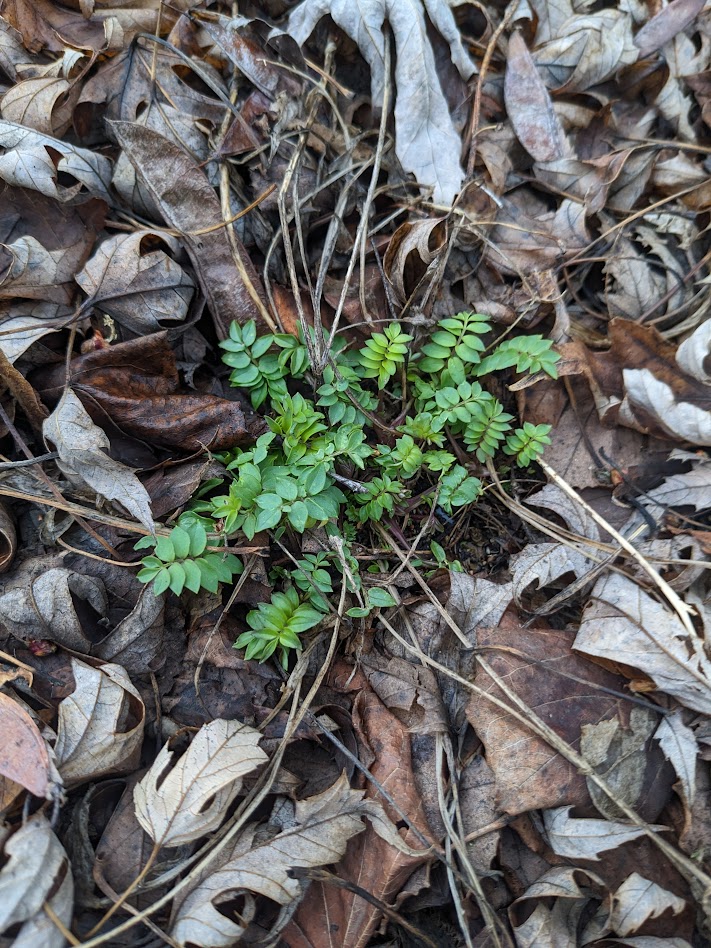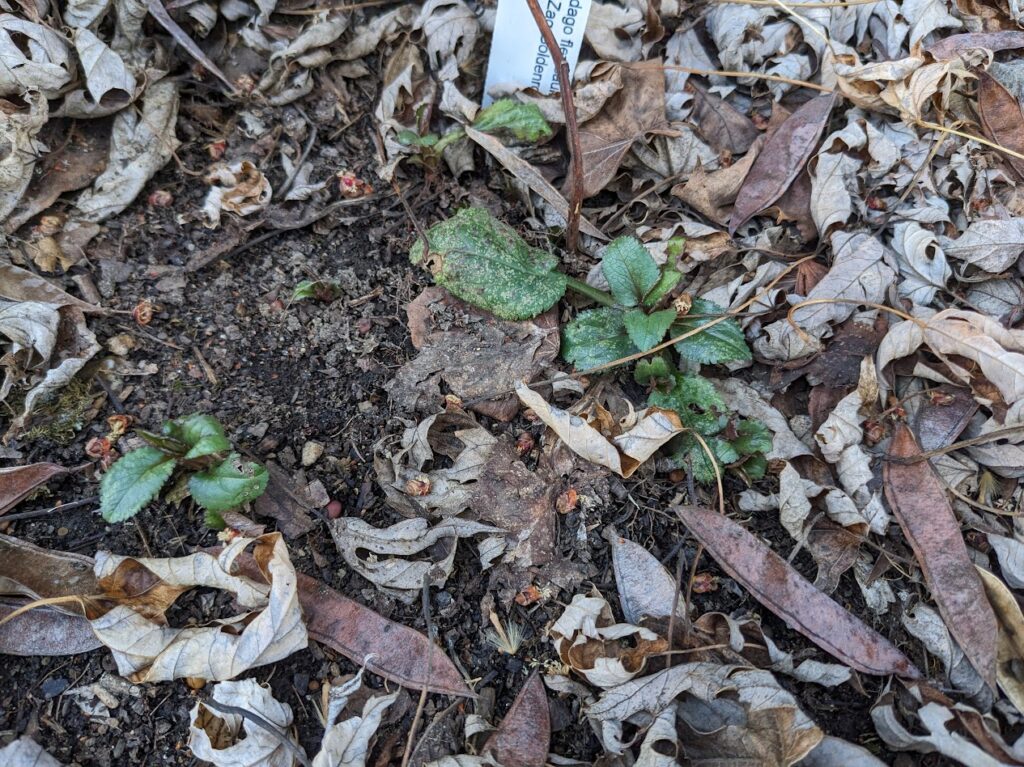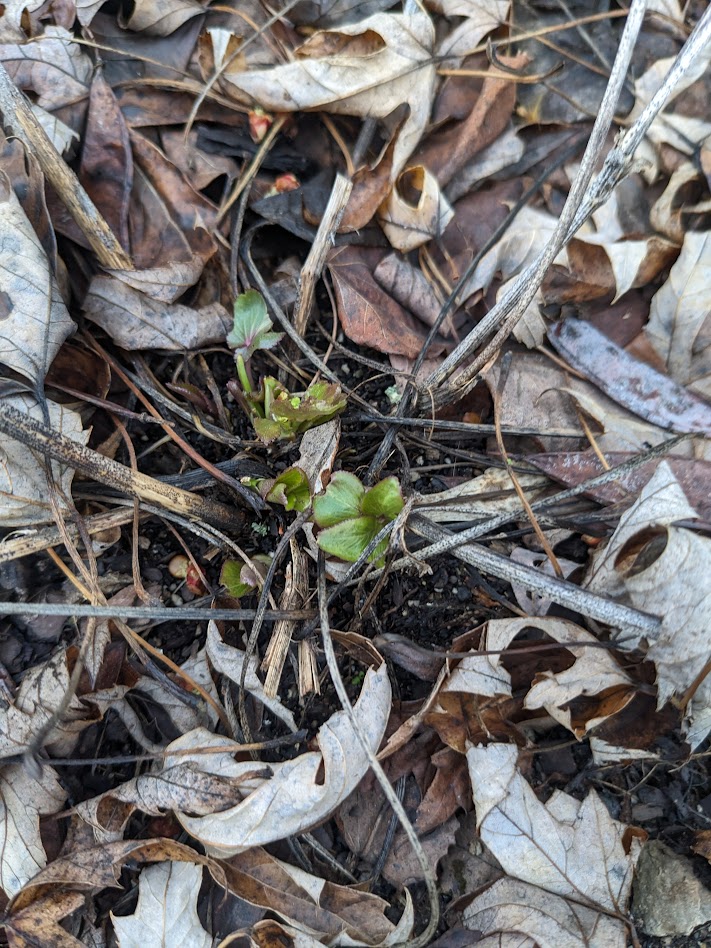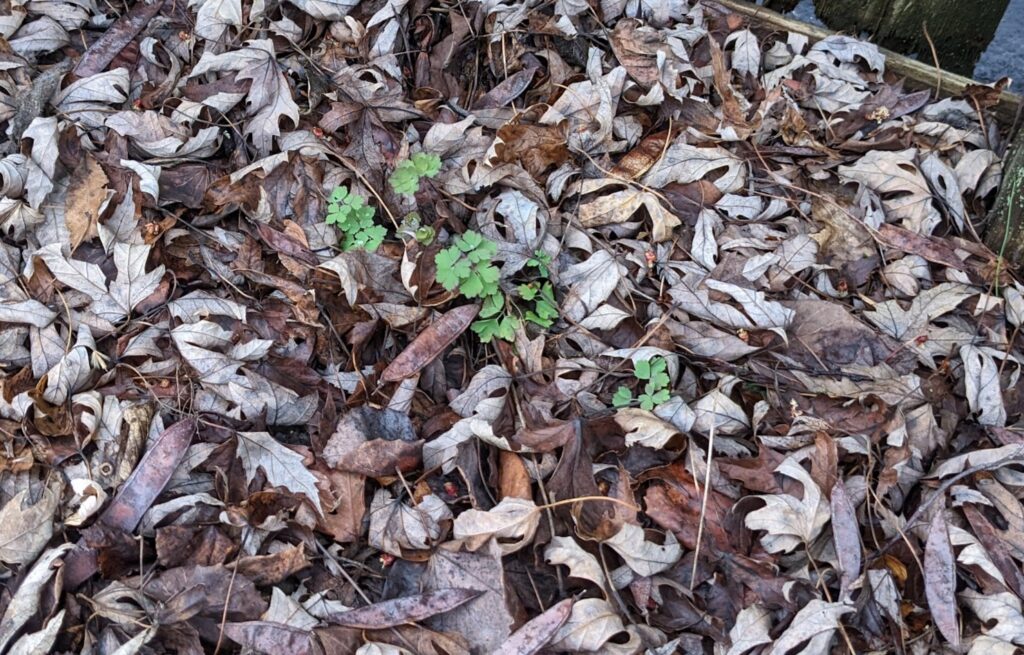Due to this year’s warm winter (which is, of course, not a one-off but rather a look into the future with a changing climate), many regions of the United States are seeing much earlier emergence and growth of a variety of native perennials.
For a couple of weeks I’ve been excited to walk through my garden (in SW Ohio) and see a wide variety of plants already poking through, which is certainly early given that it’s only late February-early March. But at the same time I’ve been a bit concerned about how everything is going to fare when the temperatures plunge yet again.
Here are a few things that are already “waking up” in my garden as of late February (and this is in addition to a few natives that stayed evergreen throughout the entire winter, most notably sedum ternatum (woodland stonecrop), but I also noticed my stiff goldenrod (solidado rigida) and penstemon hirsutus (hairy beardtongue) keep some green through the winter and are now pushing out new growth as well. Finally, I’m seeing the purplish shoots of echinacea purpurea, always an early emerger, in my garden as well.)




This extra early plant activity also raises a few questions that I was curious about myself. Here is what I’ve learned so far.
Will Early Emerging Native Perennials Die If There’s a Hard Frost?
Many native perennials are pushing out tons of new growth on multiple-day stretches that get into the 60s and 70s. But what happens when temperatures plunge back down and they experience another hard freeze?
Overall there isn’t too much to worry about but there are a few considerations. First of all, there’s a distinction to be made between mature, established plants and much younger ones. The established plants are so hardy and used to fluctuations that they typically won’t bat an eye.
But it’s a little different for newly germinated plants that you may be growing in containers or milk jugs. They too have built-in adaptations to extreme temperature fluctuations, but if it’s getting really cold overnight (like in the teens), you an always put a cover over them to protect from frost. Another issue for these young seedlings is that they are prone to dry out if it isn’t raining regularly. So make sure to water them periodically to ensure they have enough moisture to survive.
What About Native Trees and Shrubs?
Another issue is for flowering trees and shrubs that start to bloom right before a hard freeze. This can destroy the flowers or young leaves and while many species can re-leaf, it can throw off the timing with pollinators and sometimes lead to tree death if it happens multiple times. Buds just starting to open are still rather cold hardy and can slow their progress with a freeze, but the farther along the trees are, the more vulnerable. The biggest issue is with fruit trees like cherries and peaches, and ornamental varieties rather than natives, but it’s certainly a potential issue with any species and will likely be of increasing prevalence in the coming years.
How Long Should I Keep My Perennial Stems and Leaves Intact if It’s Been Unseasonably Warm?
One wildlife friendly gardening practice employed by native plant gardeners is avoiding the traditional “garden cleanup” so that perennial stems and leaf litter can remain as cover and habitat for overwintering insects. Many are wondering how early warm temperatures affect this.
Common advice (including from extension services) is to keep the stems and leaves at least until temperatures are regularly in the 50s, which is when insects typically emerge. To be clear, that is referring to low temperatures, not high.
But in reality it’s not quite that simple. Many lepidoptera species emerge later in the season, and the key factor is often the temperature of the soil and not the air temperature. So leaving stems and leaves longer, even if there is an early warm week, is a good practice for wildlife gardening.
If you have leaves in your garden bed, remember that shade and part shade plants are used to pushing through the leaf litter and will have no problems at all doing so. If it’s a thicker layer of leaves in a bed with sun-loving prairie plants, you can simply remove the leaves by hand from those perennials and relocate them elsewhere. (Remember that leaves serve as a great mulch and also suppress weeds.)
Similarly, you can cut perennial stems and carefully place them elsewhere in your yard so you get the “tidy” look in your beds while still protecting the overwintering insects and giving them a place to emerge. You could move them to the back of your bed if it’s big enough, or designate a corner of the yard that’s less prominent to be your stem pile.
All in all, I’m excited to be approaching spring and hope that nothing in my garden gets too out of whack in the next few weeks!
Leave a Reply